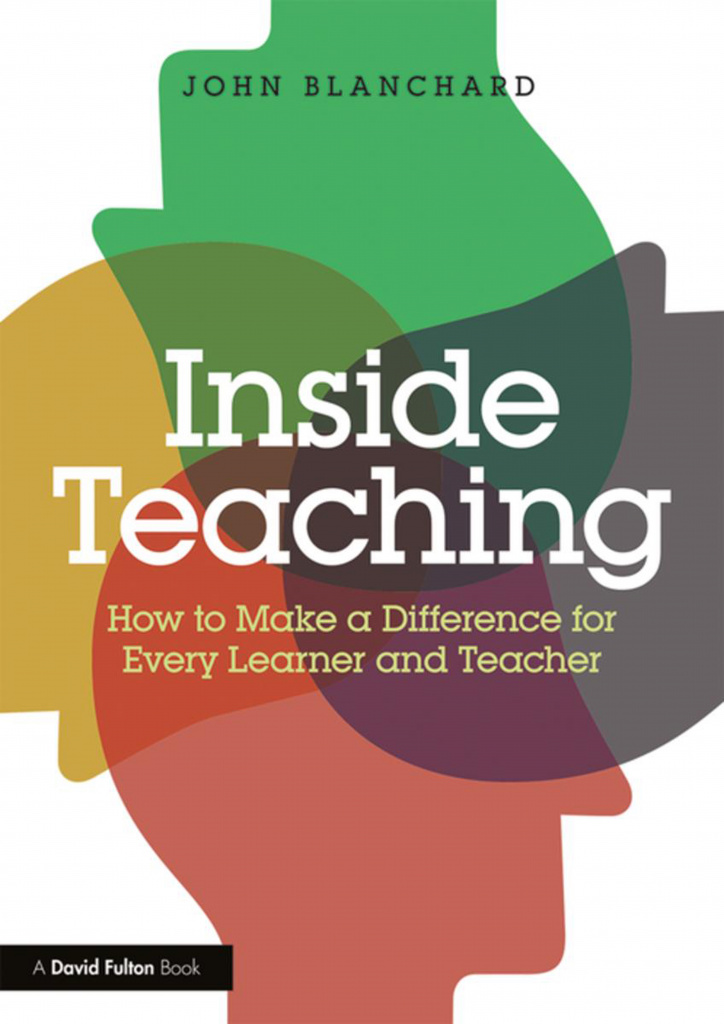
The vital importance of teacher learning
John Blanchard’s new book “Inside Teaching – how to make a difference for every learner and teacher” can be relied upon to do just that. It has the potential to make such a difference, given the scope of education professionals who can learn from it – and the likely impact of these new insights when applied to the classrooms of those who take the time to read it. For many experienced teachers (myself included) there is an important lesson which everyone entering the profession learns sooner or later; the irony of being in a learning environment where the learning of the teacher is at least equally as crucial to the success of our students as the learning and progress of those that we teach. Teachers – we ignore that message to the detriment of all our students!
Plain-speaking and relevant
What I liked about Blanchard’s book is the clarity with which he communicates his experience and acknowledges the inclusion of practitioners’ ideas alongside research to “explore intuitions and experiences that make for satisfying and effective teaching and learning.” He even fulfils his promise to do so in refreshingly jargon-free “plain English” and from page 1 makes clear that it is the learner who is at the centre of his aim to support teachers “to help your pupils learn as well as they can.” Add in references to teacher workload (high on the agenda) and the continual emphasis on the many positive and rewarding elements that teaching can afford to those who are in the profession (increasingly overlooked by stressed out teachers,) this is a timely and practical handbook. It is particularly relevant to those new to teaching and those who are lucky enough to be part of it, before the weight of recent curriculum and exam changes makes us forget how we got here in the first place!
Something for everyone
Helpfully the book is structured in 3 main parts: Part 1 explores the effects of pupils’ backgrounds on their motivations” as well as covering issues related to pupils with special needs, their participation in what school offers them and their achievements. Part 2 “illustrates qualities and skills that typify teachers who enjoy and succeed in their work” while Part 3 looks beyond the classroom and “examines wider aspects of what it means to be a teacher.” Whether you are a teacher new to the profession or still in training; a teacher in the classroom trying to be the best that you can be; a mentor / coach working to develop the skills of newly qualified staff; or a senior leader developing teaching and learning across the school to impact on student outcomes ( is there anyone who isn’t?) there is something to inspire us, to spark an idea, to encourage personal reflection and strategies to either use or adapt for one’s own school/classroom context to make a difference for students.
Igniting the passion for learning
In my view one of the key successes of the book appears early on – when Blanchard turns to considering pupils’ motivations. Too often recently I am concerned by exam-driven learning, teacher- led lessons which burden students far more with “how to answer the question” than igniting a passion for finding things out and the thrill which comes with it. Blanchard reminds us that we must put students at the centre of their own learning through student- centred activities. The book reminds us that it’s about capturing hearts and minds and ensuring learners are absorbed in their learning, experimenting and investigating, making mistakes and learning from them and engaging in a dialogue around learning. In short – having fun! The majority of students are perceptive participators in learning if we allow them to be so and can enjoy success “when lessons have a healthy affirmative ethos” and when “curiosity and inquisitiveness drive (these) activities.”
Skilling up
In part 2 Blanchard gets down to classroom business focusing first on the “qualities and skills that seem to underpin good teaching” and “How to present yourself” and then on to key areas of classroom management, such as when to use classroom teaching, group work or independent study. Subsequent chapters focus on key pedagogical approaches such as use of assessment practices, target setting, designing lessons in sequence and the use of schemas, helpfully presented across a range of curriculum areas and age groups. Finally Part 2 ends with a consideration of how we can develop effective feedback for our pupils to improve their performance. This touches on the research by Carol Dweck which informs us that students learn better “when they see that success comes from effort and resourcefulness, which they can control, rather than from innate ability or reliance on others, which they cannot control.” Finally, Blanchard reminds us that for our pupils to learn well – it is not just effective feedback which makes a difference but “the time and help to do something with the feedback they get.”